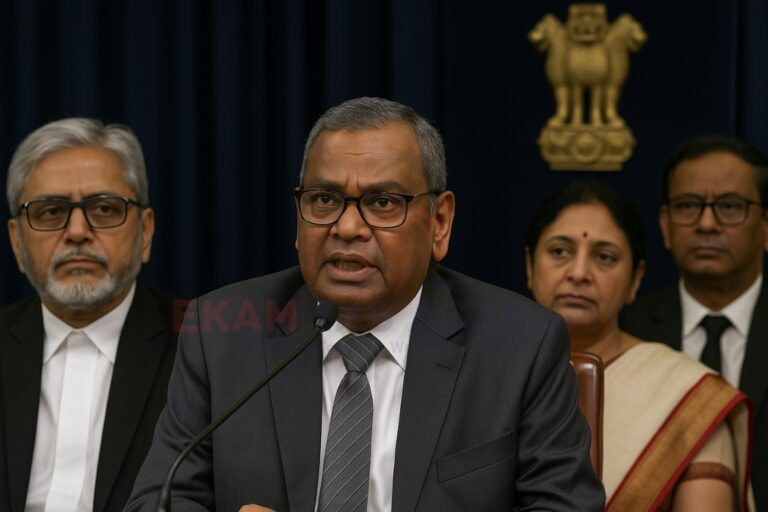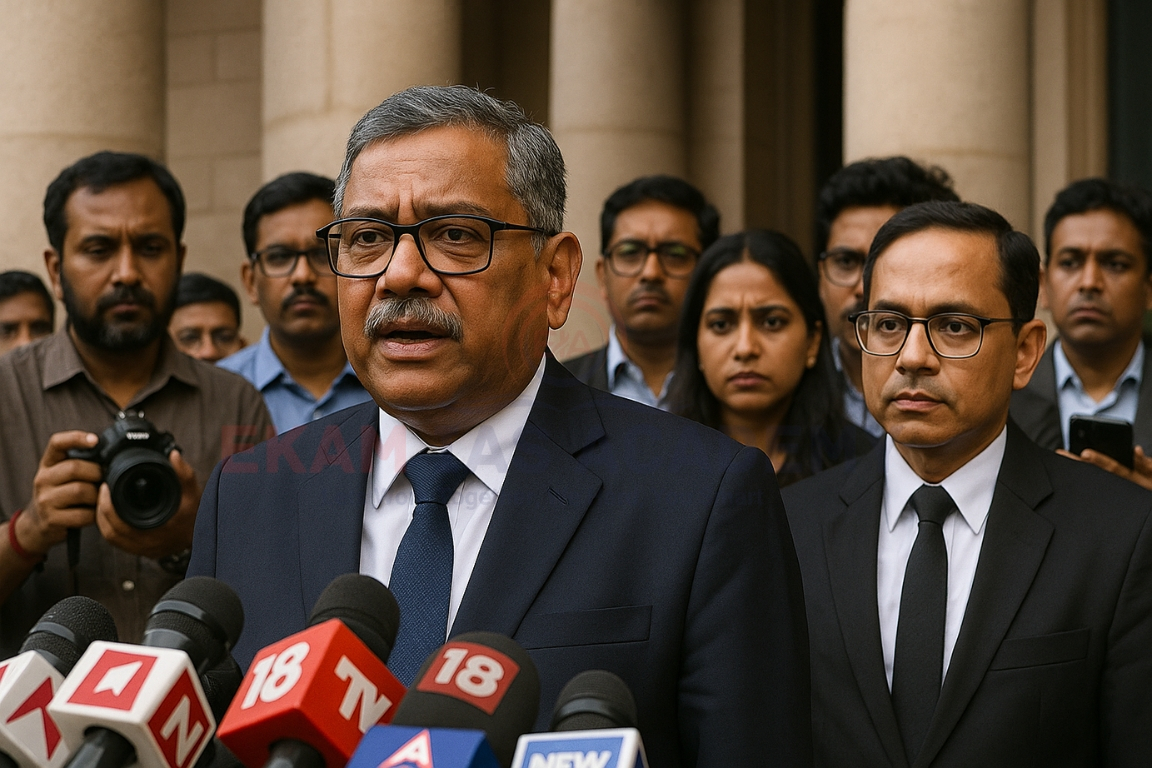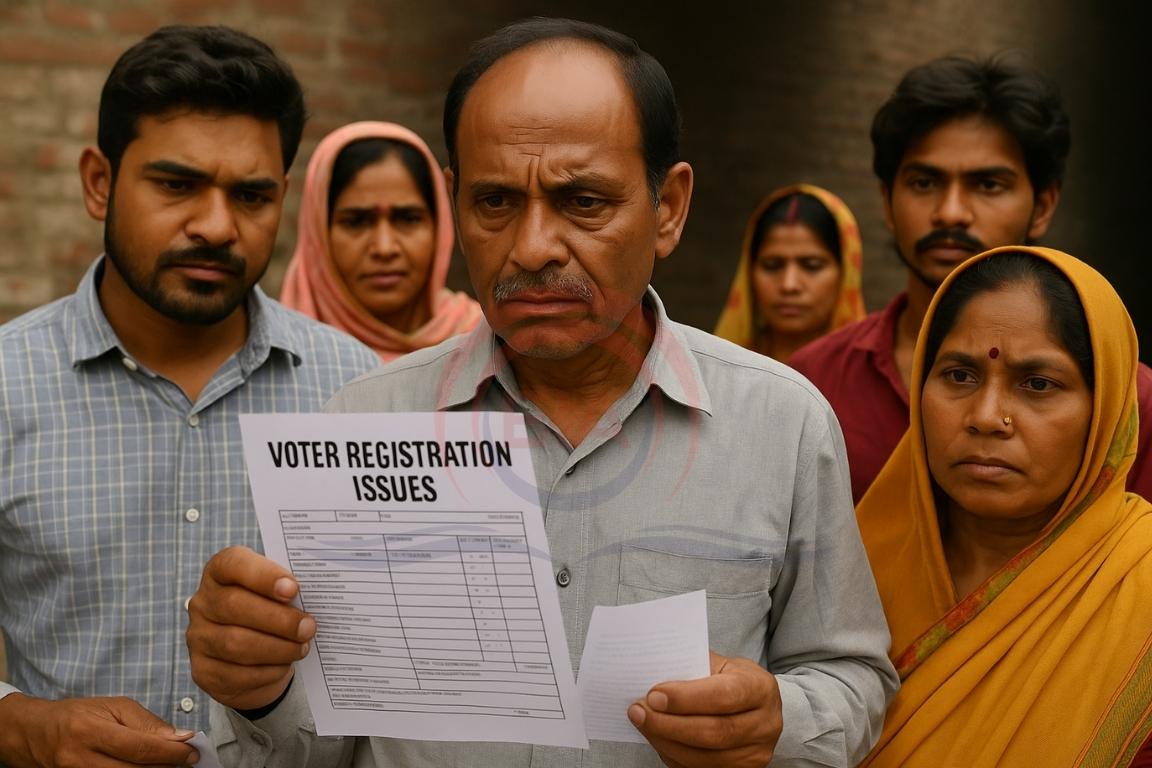Chief Justice of India (CJI) B.R. Gavai recently stated that the Supreme Court Collegium cannot impose names on High Court Collegiums for judicial appointments. His remarks come amid rising vacancies in High Courts across the country.
Background:
- Judicial appointments in India are handled through the Collegium system, comprising senior judges of the Supreme Court and High Courts.
- High Courts currently face 345 vacancies out of the sanctioned strength of 1,122 judges.
- There is an ongoing debate on broadening the selection pool to include lawyers from the Supreme Court Bar.
Collegium System
- The Collegium System is a mechanism in India for the appointment and transfer of judges in the Supreme Court and High Courts.
- It is not mentioned in the Constitution of India; rather, it evolved through judgments of the Supreme Court.
- The system gives primacy to the judiciary (instead of the executive) in judicial appointments, ensuring judicial independence.

Key Points from CJI’s Statement
- Autonomy of High Court Collegiums
- High Court Collegiums take the first decision on who should be recommended as judges.
- The Supreme Court Collegium can only suggest names, not enforce them.
- Federal Judicial Structure
- The CJI underlined that the Supreme Court and High Courts are equal in status within the federal setup.
- Neither can be considered superior or inferior to the other.
- Response to Bar’s Demand
- The Supreme Court Bar Association (SCBA) urged inclusion of SC lawyers in High Court judge selection.
- The CJI clarified that High Court Collegiums alone can initiate such recommendations.
Present Concerns
- Out of 1,122 sanctioned posts, only 777 judges are serving in 25 High Courts.
- Since November 2022, 29 recommendations made by the SC Collegium are still pending with the Central government.
- Delay in appointments affects judicial efficiency and leads to rising case pendency.
EVOLUTION OF THE COLLEGIUM SYSTEM, THROUGH THREE JUDGES CASES
1. First Judges Case (1981) – S.P. Gupta vs Union of India
- Court ruled that the Executive (Government) had primacy in judicial appointments.
- The recommendation of the Chief Justice of India (CJI) was not binding on the government.
- Thus, the Executive held more power than the judiciary in appointments.
2. Second Judges Case (1993) – Supreme Court Advocates-on-Record Association vs Union of India
- Overturned the First Judges Case.
- Held that CJI’s recommendation must be made in consultation with a collegium of senior-most judges.
- Introduced the Collegium System:
- For SC appointments → CJI + 2 senior-most judges.
- For HC appointments → CJI + 2 senior-most SC judges + concerned HC CJI.
- Judiciary now got primacy over the executive.
3. Third Judges Case (1998) – Presidential Reference
- Expanded the Collegium.
- Collegium for SC appointments = CJI + 4 senior-most judges.
- For HC appointments = CJI + 4 senior-most SC judges + HC collegium.
- Gave clarity on consultation process and made the system more robust.
Present Situation
- Today, the Collegium System (CJI + 4 senior-most SC judges) recommends appointments and transfers.
- The government can ask for reconsideration once, but if the Collegium reiterates, the recommendation is binding.
- Attempts to replace it with NJAC (National Judicial Appointments Commission) through the 99th Constitutional Amendment Act, 2014 were struck down by the SC in 2015, calling it unconstitutional.
Conclusion:
The CJI’s remarks reaffirm the independence of High Court Collegiums in judicial appointments. While the SC Collegium plays a guiding role, the first authority rests with the High Courts, highlighting the federal balance in India’s judiciary.





